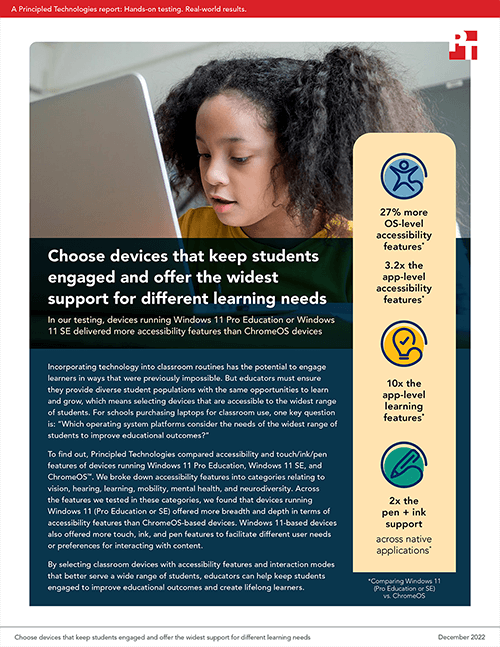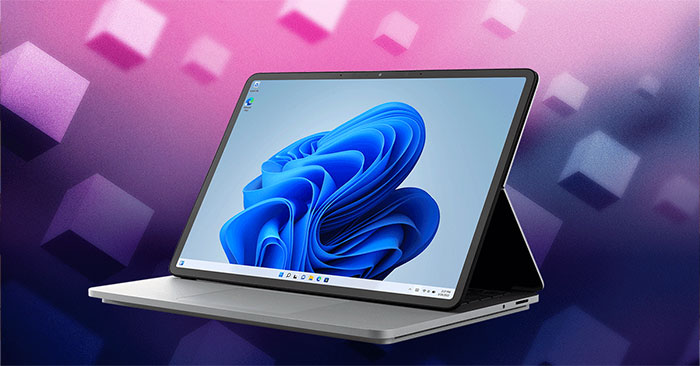
Today’s educators are more aware than ever of the challenges faced by learners with a wide variety of abilities. Because students have differences in vision, hearing, learning, mobility, mental health, and neurodiversity, the tools that deliver the best engagement opportunities for one student may not work for another. Teachers need technology with accessibility features that can help bridge the gap between basic functionality and positive learning outcomes, but having confidence that they’re providing the right gear for their students is a challenge.
PT conducted an in-depth comparison of the accessibility and interaction (touch/ink/pen) features of classroom-targeted devices running Windows 11 Pro Education, Windows 11 SE, and ChromeOS. We tested more than 180 features across eight categories, and found that devices running Windows 11 (Pro Education or SE) offered 27 percent more OS-level and 3.2x more app-level accessibility features than ChromeOS-based devices. The Windows 11-based devices also offered more touch, ink, and pen capabilities to facilitate different learner needs or preferences for interacting with content.
When educators select classroom devices with a broad range of accessibility features and interaction modes, it’s not just a smart purchasing decision for the school: It’s an investment in sustained better outcomes for the highest possible number of students in the years to come. Devices running Windows 11 Pro Education and Windows 11 SE are well-equipped for the journey.
For more details about our in-depth accessibility comparison, read the report below.
Principled Technologies is more than a name: Those two words power all we do. Our principles are our north star, determining the way we work with you, treat our staff, and run our business. And in every area, technologies drive our business, inspire us to innovate, and remind us that new approaches are always possible.






